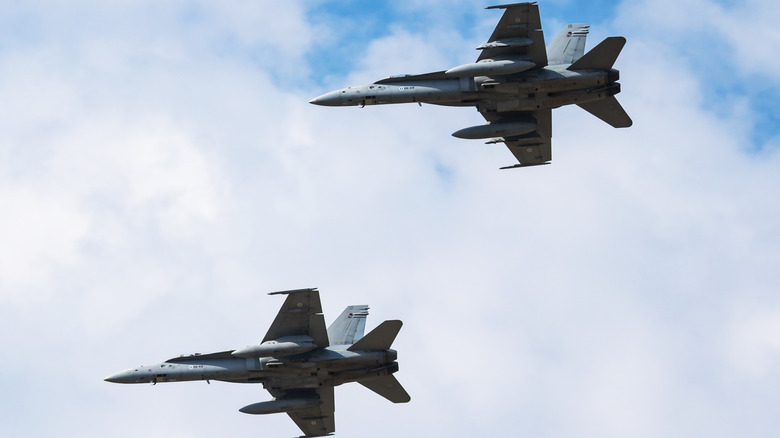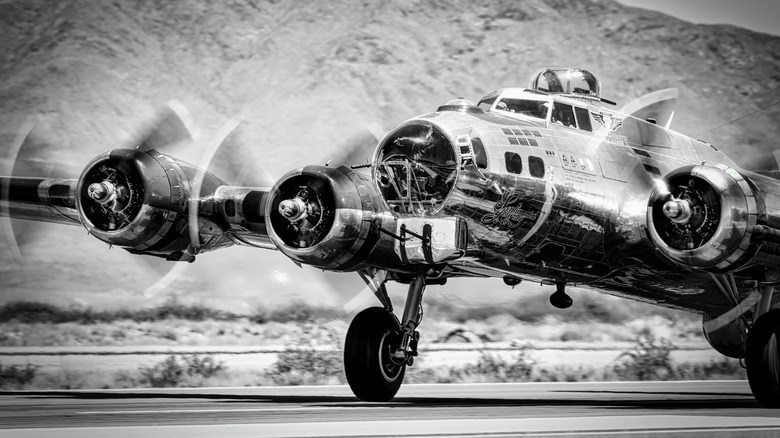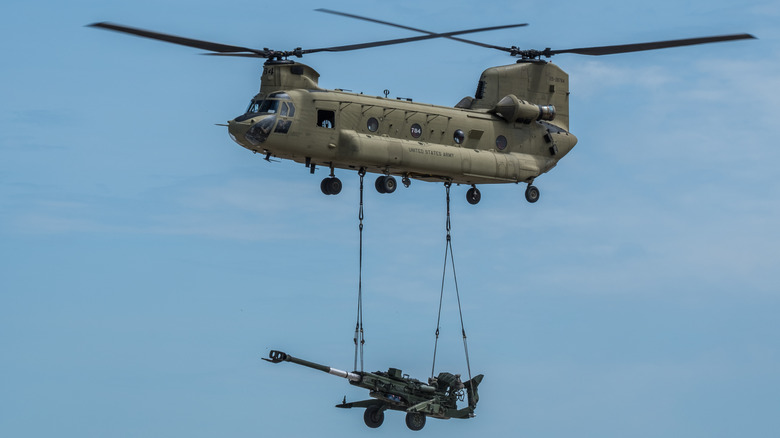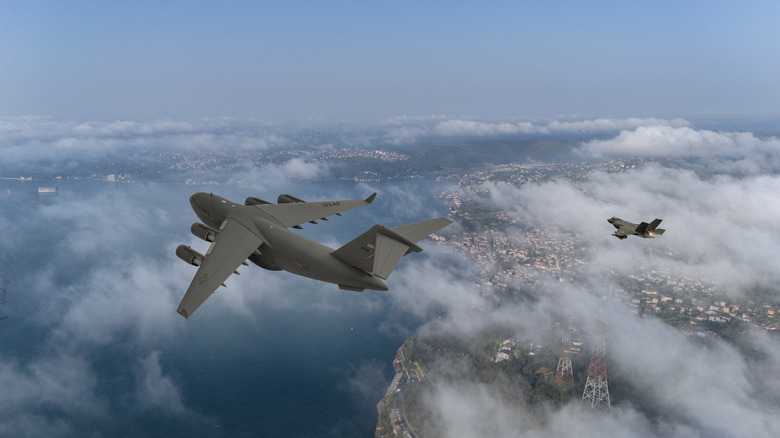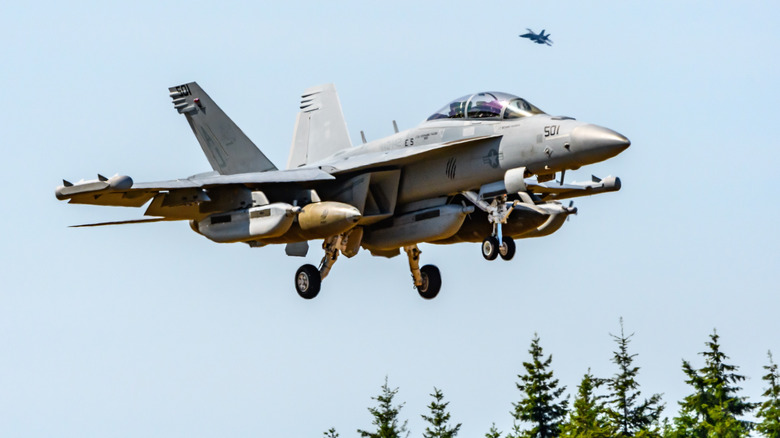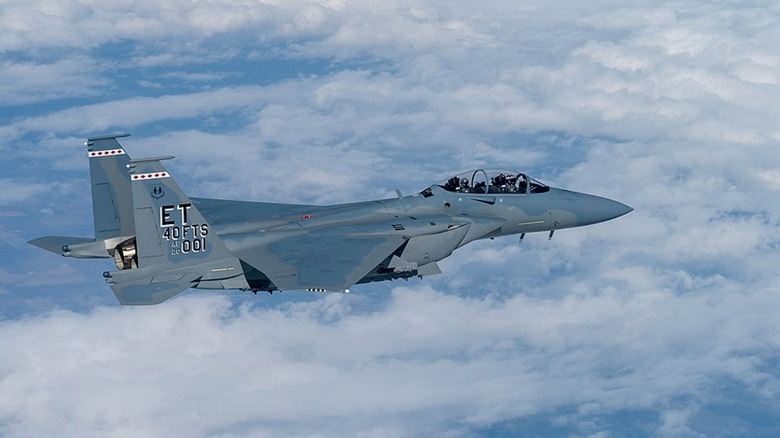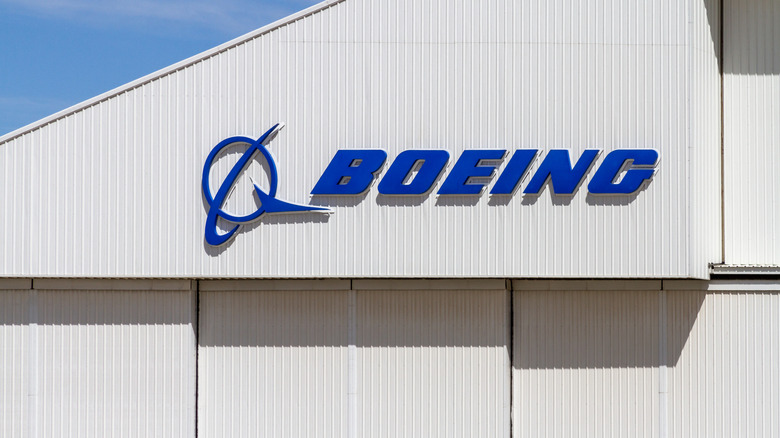5 Of The Most Important Military Aircraft Made By Boeing
Boeing is best recognized by the general public today for its giant commuter jets (as well as more than a few in-air mishaps with the 737 Max of late), and more entartaining projects like building a working X-Wing for Disney ahead of its "Rise of the Resistance" themed launch in 2019. However, Boeing has also long been a critical partner to the United States' military efforts, producing aircraft that fall under an entirely different category of functionality and value.
Some of Boeing's most impressive creations have taken the concept of human flight to new levels. The company found its feet when William Boeing bought a shipyard in 1910 to begin developing seaplane designs, and its first military craft, coming in 1923, was the Model 15 biplane, also known as the PW-9 and designated FB-1 by the Navy. Since then, Boeing has produced dozens of iconic aircraft for military use. These five are among its most important contributions to American battle plans and war efforts through the ages. Air combat has evolved since it first came into the picture after the Wright brothers' first successful flights, and Boeing has consistently been a presence at the side of American military strategy. These five aircraft have acted as tremendous force multipliers in a range of specific ways.
B-17 Flying Fortress
This one's among the most influential airplanes ever built, not just within the Boeing design universe. The B-17 Flying Fortress helped win World War II, delivering crucial bombing support leading up to and during the D-Day invasion of Normandy in particular. This vessel was responsible for the largest total bombing volume of any used during the war, and across a nine year production window nearly 13,000 were built, making it the second most produced bomber to roll off the lines during this time.
These four-engine goliaths were deployed to all fringes of the conflict, and they were used in both day and night bombing operations. The Flying Fortress also deployed the Norden M-9 bombing sight, which helped crews fire off their deadly payloads, ranging up to 17,600 pounds of munitions at their peak (with a typical load weighing 8,000 pounds). The B-17 was also armed with 13 Browning .50 caliber machine guns that offered defensive coverage in a comprehensive bubble surrounding the bomber, although each gun was loaded with just one minute's supply of ammunition if fired continuously. These bombers helped turn the tide of the war, with frontline bombing to support the European mainland landing. They also delivered long range destruction into Germany, and specifically provided potent demolition capability in targeting Nazi production centers. This helped keep the German air forces under-fulfilled and hemorrhaging critical supplies and vessels.
MH-47 Chinook
In addition to its military deployments, the MH-47 Chinook transport helicopter has also played a prominent role in many film and game environments, throwing an easily recognizable shadow down. Entering service in 1962, it remains in service to the U.S. military and nearly two dozen other global military forces today. The lengthy body features two rotors — above the cockpit and at the rear — that deliver enough lift to carry equipment, load up with significant numbers of passengers (one reportedly hauled 147 refugees from Vietnam as the war came to an end), and travel both high and fast. The Chinook is likely the fastest military helicopter in any fleet, offering a top speed at just under 200 mph. It's also capable of hauling gear either inside the cargo hold or lifted beneath the vessel, with a 48,000-pound capacity. The aircraft remains a core element in quick response tasks, insertion requirements when moving into hostile territory, and in hot extractions where ample support force is necessary.
Boeing has continued to make improvements to the Chinook, allowing the vessel to remain a key cog in the battle-ready machine of the U.S. military. The ability to fly higher than any other vessel in its class rounds out a combination of impressive features. Chinooks have also become a modern staple in sea rescue operations involving the Coast Guard and other operators. It's also a crucial asset in emergency relief efforts thanks to the underslung towing functionality and can even land on the water!
C-17 Globemaster III
The Air Force calls the C-17 Globemaster III the "most flexible" cargo aircraft to enter its service. It's redefined the logistical gordian knot that persists throughout even the most benign transportation needs the military faces. Whether moving people or things, the military requires tools that deliver fast and efficient movement and above all, hefty load capacity. In 2015 when ISIS overtook Mosul, 2,300 U.S.-supplied Humvees were destroyed or captured. It was a big story at the time, but something that didn't get as much recognition in the story was how much effort moving those pieces of equipment into position in the first place really took. Sure, the military could (and does) transport heavy equipment by sea, but the delivery timeline for essential gear when moved across the ocean is an order of magnitude longer than air transport.
Not all cargo aircraft are made equal, and the C-17 stands tall as perhaps the preeminent solution for hauling significant quantities of material and personnel from one corner of the world to another, making it incredibly hard to replace, even as the Air Force looks for its next generation of huge haulers. A C-17 leaving Afghanistan during the pullout lifted off with 823 Afghans aboard, although the vessel is typically configured to transport 102 paratroopers, 170,900 pounds of cargo (with 18 pallet positions available), 220 passengers, or some combination of each. It's capable of takeoff on runways as short as 3,500 feet, making it a potent cargo tool with plenty of flexibility.
EA-18G Growler
Not all combat aircraft have to carry gigantic stashes of weaponry. For instance, the EA-18G Growler was designed to turn the tide of combat without every having to fire a shot. These carrier-based aircraft, built on the F/A-18F Super Hornet airframe, carry ALQ-99 jamming pods and other electronic warfare capabilities such as its APG-79 Active Electronically Scanned Array radar system and AN/ALQ-218 detection pods. The aircraft is frequently armed with AIM-120 air-to-air missiles as well, to provide additional, physical defense for itself and others it may be supporting. The Growler is a constant presence in hostile skies, accompanying other Navy pilots into battle spaces to deliver critical radar jamming and other defensive capabilities to bring bombers and fighter jets home safely with each new mission flown.
The Growler first entered service for the Navy in 2009 and The National Interest called it potentially "the Navy's most important jet," in September 2024. It maneuvers much like the Super Hornet, providing extreme flexibility in the air, and without the weapons that would underpin a similar fighter jet, the Growler can haul an extra 10,000 pounds of fuel to massively extend its range and flight time. It's the "most advanced airborne electronic attack aircraft" in the sky, according to Naval Technology. All this is to say that the Growler provides a non-negotiable edge in air superiority tasks and in managing battlefield conditions on the ground below, helping to deliver key safety and situational awareness to its allies across the spectrum.
F-15EX Eagle II
The F-15EX Eagle II is a reimagining of an earlier aircraft, filling a particularly tricky void that was created in the pipeline of new and improved aircraft for the U.S. military. Boeing says that this jet can serve as "the backbone" for any tactical fighter fleet, and the results appear to back that claim up, even as cutting edge fighter jets like the F-35 or F-22 populate the halls of modern airborne warfare. This fighter delivers a best-in-class payload capacity (up to 30,000 pounds of munitions), carries advanced radar tools and a cutting edge avionics system, and more.
Created as a bridge between the F-22 and an ever-shifting delivery date for the F-35, the F-15EX Eagle II wasn't meant to perform as a longstanding fighter craft. However, what Boeing produced in this platform has become a key asset for the Air Force in surprising ways.
The jet provides a lower operational cost over the long term compared to the F-35, without sacrificing lethality or other important aerial capabilities. This makes it a tool that's likely to stick around for quite some time as older models are phased out and newer air superiority inclusions come into the picture. Basically, this jet has carved out its own little functional and strategic niche in the Air Force's arsenal, and therefore stands among Boeing's most important current contributions to American combat readiness.
Methodology
These aircraft have provided huge functional changes to the fleet of airborne tools that the military has at its disposal. Each one improved the task at hand by leaps and bounds, whether in bombing capabilities, dogfighting and escort tasks, or in defensive capabilities. At their heart, each one also helps or helped to massively boost the survivability of missions that their crews would undertake in comparison to earlier or other aircraft used for the same purposes. They're all therefore transformative.
